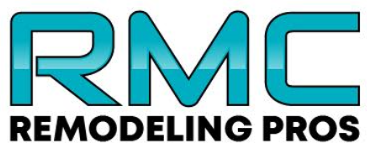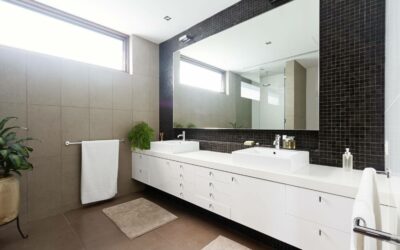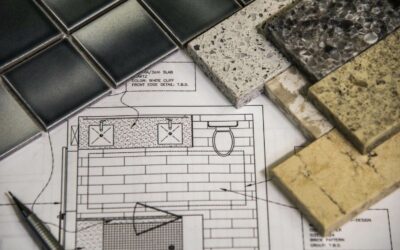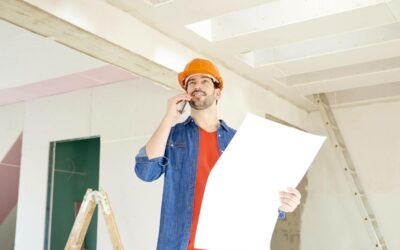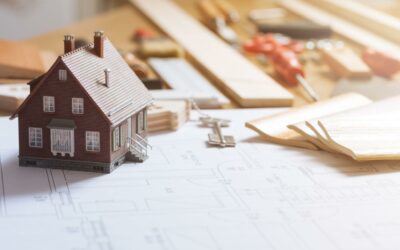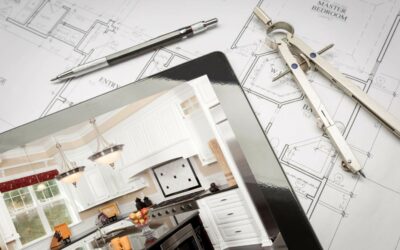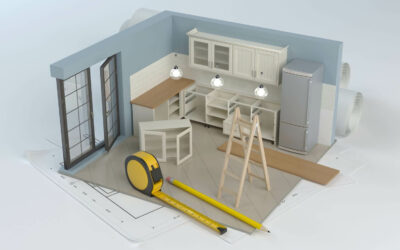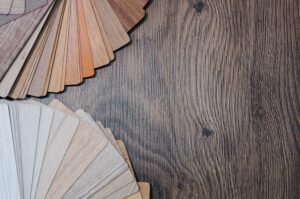
Installing new flooring can completely transform a room, enhancing both its style and functionality. Luxury vinyl plank (LVP) flooring has become one of the most popular choices among homeowners because it mimics the look of hardwood or stone but is far more affordable, durable, and easier to maintain. However, installing LVP is not as simple as it might appear. Without proper expertise, homeowners can easily make costly mistakes that can compromise both the appearance and longevity of the flooring. Working with a professional installer not only ensures that the job is done correctly but also saves time, effort, and money in the long run.
In this article, we’ll go over some of the most common mistakes made during LVP flooring installation and discuss why hiring a professional installer is the smartest choice for a beautiful, durable floor.
1. Skipping Subfloor Install Preparation
The Importance of a Smooth, Level Surface
Subfloor preparation is one of the most critical steps in any flooring installation. If the subfloor isn’t clean, smooth, and level, it can lead to uneven surfaces, premature wear, or even damage to the flooring. Because LVP is a floating floor that clicks together, it may seem more forgiving of slight imperfections. However, any existing lumps, debris, or uneven spots will still be felt underfoot and may cause issues over time.
Common Problems with Unprepared Subfloors
- Visible Imperfections: If the subfloor is uneven, these imperfections can show through the flooring, causing unsightly lumps or depressions.
- Reduced Lifespan: An uneven subfloor can cause certain planks to bear more weight or shift over time, leading to early wear and tear.
- Unstable Flooring: Without a solid base, the flooring may start to lift or separate at the seams, diminishing the overall appearance and stability of the floor.
How a Professional Helps
Professionals know that subfloor preparation is not a step to rush. They have specialized equipment, such as levels and sanding machines, to detect and fix uneven areas before installation. Professionals will ensure that the subfloor is clean, smooth, and moisture-free to provide a stable foundation, resulting in a flawless and long-lasting finish.
2. Not Choosing the Right LVP Product for Each Room
Why LVP Type Matters
LVP flooring comes in a range of styles and specifications. Some LVP is designed to handle high-moisture environments, such as bathrooms or basements, while other types are best suited for dry, high-traffic areas. The wrong type of LVP can result in premature damage or an unsatisfactory finish. It’s important to consider the environment, traffic levels, and specific requirements of each room when choosing your LVP product.
Common Issues When Selecting the Wrong Type
- Moisture Damage: Installing standard LVP in a bathroom or laundry room can lead to warping, peeling, or mold issues.
- Premature Wear: Using a low wear-layer LVP in a high-traffic area can cause noticeable wear and scratching within a short period.
How a Professional Can Guide You
Professionals can recommend the best type of LVP for each area of your home. They understand the technical details, such as the wear layer’s thickness, waterproof capabilities, and resilience, and can steer you towards a product that will handle the specific demands of each space. This knowledge ensures a floor that not only looks great but lasts longer, even under daily use.
3. Skipping the Acclimation Process
Understanding the Role of Acclimation
LVP is sensitive to changes in temperature and humidity. Like many other flooring materials, it expands and contracts with changes in its environment. Acclimating LVP flooring means letting it sit in the room where it will be installed for a specific period, usually 48 hours, so it adjusts to the room’s conditions. This step is critical to avoid buckling, warping, or creating unsightly gaps between planks.
Common Issues Without Acclimation
- Gapping Between Planks: If the planks shrink after installation, they may leave gaps, especially along seams.
- Buckling or Lifting: When LVP expands after installation due to acclimation, it may press against walls, causing it to buckle.
Why Professionals Always Acclimate
Professional installers adhere to manufacturer guidelines, which typically include acclimating the material to the room’s temperature and humidity before installation. They understand the importance of this step in preventing future problems, saving you from costly repairs or replacements.
4. Measuring Incorrectly
The Precision Required in Measurement
Measuring a room for LVP installation involves more than just getting the square footage. Installers need to account for doorways, corners, and other architectural features to ensure a seamless fit. Incorrect measurements can lead to material waste and unattractive results with misaligned seams and gaps.
Common Issues with Inaccurate Measurements
- Misaligned Seams: If the planks don’t fit together perfectly, you may end up with visible seams or gaps between planks.
- Waste of Material: Poor measuring results in excessive cutting, leaving you with unusable scraps and possibly requiring you to purchase more materials.
How Professionals Ensure Accuracy
Professional installers know the tricks of the trade when it comes to measuring tricky areas, including using tools like laser measures for precision. They also plan each cut and layout with foresight, minimizing waste and maximizing the aesthetic appeal of the floor.
5. Improper Expansion Gaps
Why Expansion Gaps Are Essential
As LVP flooring expands and contracts, it needs space to do so without pressing against walls. Leaving an expansion gap around the perimeter of the room is essential for this movement. Many DIY installers either forget or underestimate the importance of this gap, leading to serious issues over time.
Problems Caused by Inadequate Expansion Gaps
- Buckling and Lifting: Without room to expand, the flooring can push against walls, causing it to buckle or lift.
- Damage to Walls: If the flooring expands into the walls, it can cause damage to drywall, baseboards, or other fixtures.
How Professionals Handle Expansion Gaps
Professional installers are well aware of how much expansion space is needed for each type of LVP and environmental conditions. They use spacers to ensure a consistent gap around the room, and they cover this gap with trim or molding to create a polished, finished look that accommodates natural movement.
6. Misusing Adhesives (for Glue-Down LVP)
The Importance of Proper Adhesive Application
Glue-down LVP floors require precise application of adhesive to avoid lifting, bubbling, or movement of the planks. Incorrectly applied adhesive can lead to costly repairs, especially if planks come loose or shift after installation.
Common Adhesive Issues
- Lifting Planks: Planks not securely adhered may lift over time, causing tripping hazards and aesthetic problems.
- Bubbling: Excess adhesive or air trapped underneath can cause unsightly bubbles.
How a Professional Ensures Proper Adhesion
Professional installers have extensive experience in applying the right amount of adhesive using appropriate tools. They also know how to lay down glue in a way that minimizes air pockets, ensuring a flat, bubble-free finish. This expertise prevents the planks from shifting over time and keeps your flooring secure.
7. Not Staggering Planks Correctly
Why Staggering Matters
Staggering planks provide a natural, visually pleasing look and also contribute to the structural stability of the floor. Poor staggering can make a room look unbalanced and even cause weaknesses in the flooring’s overall construction.
Problems with Poor Staggering
- Weak Spots: Overlapping seams weaken the structural integrity of the floor.
- Unnatural Appearance: Planks that are not staggered correctly can look repetitive and artificial.
The Expertise of Professionals in Staggering
Professional installers are skilled at staggering planks to create a balanced and natural look. They strategically plan the layout to avoid aligning seams and ensure that the flooring appears seamless. This planning adds to both the aesthetic and structural strength of the floor.
8. Installing Over an Unsuitable Surface
Compatibility of Surfaces
Installing LVP over an incompatible surface, such as a carpet or very uneven tile, is a recipe for disaster. Certain surfaces are prone to movement, while others may have bumps or gaps that can ruin the finish of the flooring.
Potential Problems
- Uneven Appearance: Installing LVP over a bumpy or soft surface can lead to visible imperfections in the floor.
- Premature Wear: Soft surfaces, like carpet, can cause LVP to shift and wear out faster.
Why a Professional Knows What Works
A professional installer knows which surfaces work best for LVP and how to prepare those surfaces to prevent movement and unevenness. If necessary, they’ll remove or sand down incompatible materials, ensuring a stable base for your flooring.
9. Rushing Through Installation
The Impact of a Rush Job
LVP installation takes time, and rushing through the process can lead to mistakes at every step—from subfloor prep to measuring, cutting, and installing each plank. Hastily done, the job might look fine at first, but problems are likely to surface later.
Issues with Rushed Installations
- Sloppy Alignment: Without proper care, planks can end up crooked or misaligned.
- Overlooked Steps: Important processes like subfloor inspection or adhesive drying time may be skipped in haste.
Why Professional Installation is Worth the Time
A professional installer will take the necessary time to follow each step with precision and care. They have a deep understanding of each step’s importance, ensuring the final product is flawless. The time invested by a professional results in a beautiful and durable floor that withstands years of use without issues.
10. Lacking the Right Tools
The Tools Required for a Flawless Installation
Proper LVP installation requires specialized tools like tapping blocks, spacers, and precision cutters. Attempting the job with improper tools can make it difficult to achieve a professional finish, leaving you with poorly fitted seams or damaged planks.
The Professional Advantage
Professional installers come equipped with all the tools required for each step of the job. They also know how to use these tools for precision cuts, exact measurements, and a smooth finish that elevates the overall look of the floor.
Flooring Installation Mistakes to Avoid Conclusion
While installing LVP flooring yourself might seem feasible, each step in the process requires skill, experience, and careful attention to detail. Professional installers bring expertise and precision to each phase of the job—from subfloor preparation to staggering and adhesive application. Their knowledge and tools ensure a durable, flawless result without the headaches and risks of a DIY project. By investing in professional installation, you’ll enjoy beautiful, resilient flooring that’s built to withstand daily life, adding long-term value and aesthetic appeal to your home.
Read Other Blog Posts to Better Understand Home Design and Construction Remodeling Advantages
Best Tips Before Starting a Bathroom Remodeling Project
Are you getting ready to start a bathroom remodeling project? A...
Are You Considering a Bathroom Remodel at Home?
There comes a time in every homeowner’s life when they ask themselves...
Who to Hire to Remove a Load-Bearing Wall Project
Remodeling is something that is often necessary when you want to...
How Do I Choose the Best Home Remodeler Near Me
How do I find the best home remodeler? With many different types of...
What You Should Know About Kitchen Remodeling at Home
If you are excited to book your kitchen remodel with RMC Remodeling...
Should You Refinish Or Replace Your Kitchen Cabinets at Home
Kitchen cabinets are one of the main focal points of your kitchen...
